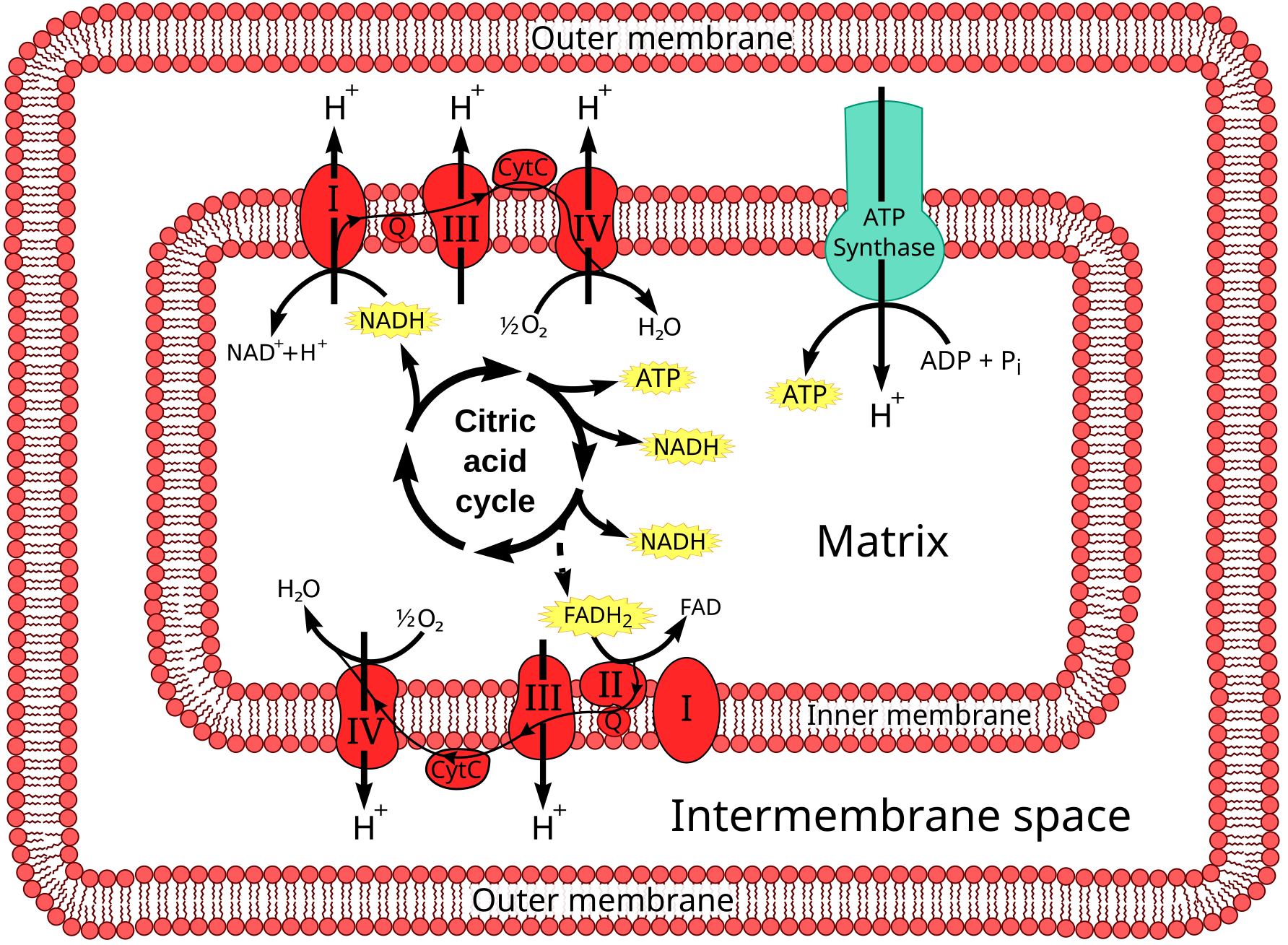Table of Contents
The Electron Transport Chain and Chemiosmosis
Recall that electrons were released during the reactions of glycolysis and the citric acid cycle. These electrons were picked up by NAD+ and FAD to form NADH and FADH2. The energy stored within these electrons will now be slowly released to generate ATP.
The electron transport chain (ETC) is a series of electron carriers embedded in the inner mitochondrial membrane. These carriers are proteins called cytochromes, and they contain metal centers that can accept electrons. The electrons stored by NADH and FADH2 are transferred to these cytochromes in a step-by-step manner. As the electrons move from carrier to carrier, they release energy that is used to power the movement (pumping) of protons into the intermembrane space. This creates a concentration gradient with many protons in the intermembrane space and few protons in the mitochondrial matrix.
The final electron acceptor in the electron transport chain is an O2 molecule that is reduced into 1/2 H2O molecules. This apparent movement of water molecules from the chemical synthesis is termed chemiosmosis. A channel in the inner mitochondrial membrane called ATP synthase acts as a gateway for the diffusion of protons back into the matrix. This movement of protons drives the production of ATP by oxidative phosphorylation. In fact, most of the ATP produced by cellular respiration is made by chemiosmosis.

Metabolic Pool
The catabolic pathways involved in the glycolysis and the citric acid cycle constitute the metabolic pool that supplies building blocks for other anabolic reactions in the cell. An excess of carbohydrates can result in an accumulation of acetyl-CoA molecules. If there is a great excess of acetyl-CoA, the acetyl groups can be committed to fatty acid synthesis for long-term energy storage.
Glycolytic products can also be the starting point for amino acid synthesis. 3-phosphoglycerate can be used to synthesize glycine, cysteine and serine. Pyruvate can be used to generate alanine, valine and leucine. Oxaloacetate from the Krebs cycle can be used as a starting point for aspartate, lysine, asparagine, methionine, threonine and isoleucine. Glutamate and glutamine are synthesized from α-ketoglutarate formed during the Krebs cycle.
While most of the 20 amino acids can be synthesized de novo, there are 9 essential amino acids in humans that can not be synthesized in sufficient quantity and therefore must be gained from the diet. These essential amino acids include: histidine, isoleucine, leucine, lysine, methionine, phenylalanine, threonine, tryptophan and valine.
Print this page


